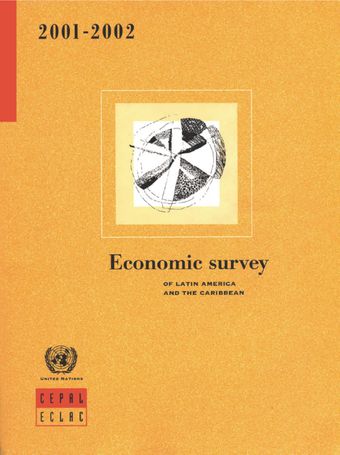The regional economy in 2001

- Author: Economic Commission for Latin America and the Caribbean
- Main Title: Economic Survey of Latin America and the Caribbean 2001-2002 , pp 39-76
- Publication Date: October 2002
- DOI: https://doi.org/10.18356/e8ef6a40-en
- Language: English
The sharply slower growth rates recorded by the Latin American economies in 2001 thwarted the previous year's hope of embarking upon a new growth cycle. As a result of this slowdown, employment fell, although unemployment levels held steady because of a decline in participation rates. The slump was attributable to adverse international conditions combined with a number of worrisome developments within the region. External factors included declining international prices for the region's main exportables (oil, coffee and others) in a rapidly slowing global economy, especially in North America. This was partly due to the financial turbulence associated with downturns on world stock markets and the uncertainty generated by the 11 September terrorist attacks in the United States, which had repercussions on economies around the world, and particularly in Latin America and the Caribbean. These factors resulted in lower export values, dwindling private capital flows (especially to Argentina and Brazil) and rising external debt service. The most critical domestic problems included the financial crisis in Argentina, which had contagion effects on neighbouring economies, and a major energy crisis in Brazil. In addition, a number of natural disasters destroyed physical infrastructure in Central America and the Caribbean, while foot-and-mouth disease made a reappearance in the southern part of the continent. These developments
-
From This Site
/content/books/9789211558388s002-c002dcterms_title,dcterms_subject,pub_keyword-contentType:Journal -contentType:Contributor -contentType:Concept -contentType:Institution105



